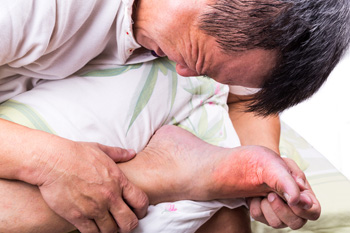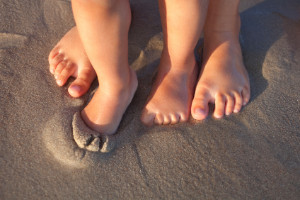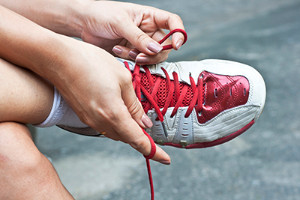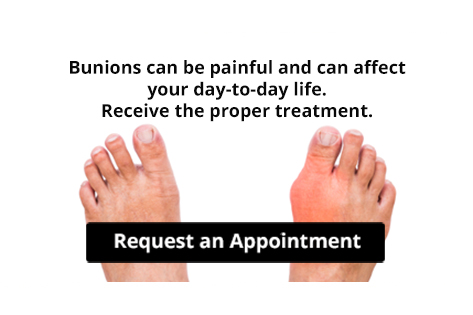Connect With Us
Blog
Items filtered by date: June 2019
What Is a Gout Attack?
 The condition that is known as gout is considered to be a form of arthritis, and affects the joint under the big toe. Many people who suffer from this ailment often experience severe pain and stiffness, which will most likely begin during the night. Additional symptoms include extreme sensitivity when touched, as well as the joint appearing to be swollen and red. This condition occurs as a result of excess uric acid in the blood levels, which can cause crystals to form. These crystals can lodge into the joints of the body, and many patients notice symptoms of this in the big toe. Research has indicated the formation of these crystals can be caused by eating foods that have elevated levels of purines. These include shellfish, red meat, alcohol, and sugary beverages. If you are having gout attacks, it is advised to speak to a podiatrist who can guide you toward beginning proper treatment, in addition to learning about prevention methods.
The condition that is known as gout is considered to be a form of arthritis, and affects the joint under the big toe. Many people who suffer from this ailment often experience severe pain and stiffness, which will most likely begin during the night. Additional symptoms include extreme sensitivity when touched, as well as the joint appearing to be swollen and red. This condition occurs as a result of excess uric acid in the blood levels, which can cause crystals to form. These crystals can lodge into the joints of the body, and many patients notice symptoms of this in the big toe. Research has indicated the formation of these crystals can be caused by eating foods that have elevated levels of purines. These include shellfish, red meat, alcohol, and sugary beverages. If you are having gout attacks, it is advised to speak to a podiatrist who can guide you toward beginning proper treatment, in addition to learning about prevention methods.
Gout is a painful condition that can be treated. If you are seeking treatment, contact Scott Matthews, DPM, MD from Salem Foot Care . Our doctor will treat your foot and ankle needs.
What Is Gout?
Gout is a form of arthritis that is characterized by sudden, severe attacks of pain, redness, and tenderness in the joints. The condition usually affects the joint at the base of the big toe. A gout attack can occur at any random time, such as the middle of the night while you are asleep.
Symptoms
- Intense Joint Pain - Usually around the large joint of your big toe, and it most severe within the first four to twelve hours
- Lingering Discomfort - Joint discomfort may last from a few days to a few weeks
- Inflammation and Redness -Affected joints may become swollen, tender, warm and red
- Limited Range of Motion - May experience a decrease in joint mobility
Risk Factors
- Genetics - If family members have gout, you’re more likely to have it
- Medications - Diuretic medications can raise uric acid levels
- Gender/Age - Gout is more common in men until the age of 60. It is believed that estrogen protects women until that point
- Diet - Eating red meat and shellfish increases your risk
- Alcohol - Having more than two alcoholic drinks per day increases your risk
- Obesity - Obese people are at a higher risk for gout
Prior to visiting your podiatrist to receive treatment for gout, there are a few things you should do beforehand. If you have gout you should write down your symptoms--including when they started and how often you experience them, important medical information you may have, and any questions you may have. Writing down these three things will help your podiatrist in assessing your specific situation so that he or she may provide the best route of treatment for you.
If you have any questions, please feel free to contact our office located in Wikesboro, NC . We offer the newest diagnostic and treatment technologies for all your foot care needs.
The Benefits of Children Walking Barefoot While Indoors
 At eighteen months, a child’s foot is half the length of their adult feet. The majority of babies are born with flat feet, and most of the bones are fully formed at eighteen years of age. When children first begin to walk, it is vital to have them walk barefoot while indoors. This will help the toes become stronger by grasping the floor. When the first shoes are purchased, it is important to choose materials that are flexible and lightweight. Many children walk with their toes pointing inwards or outwards, and this will most likely be outgrown by approximately two years of age. If your child complains of foot pain, or prefers not to walk and be carried, it is suggested that you seek the counsel of a podiatrist who can properly diagnosis any potential foot conditions your child may have.
At eighteen months, a child’s foot is half the length of their adult feet. The majority of babies are born with flat feet, and most of the bones are fully formed at eighteen years of age. When children first begin to walk, it is vital to have them walk barefoot while indoors. This will help the toes become stronger by grasping the floor. When the first shoes are purchased, it is important to choose materials that are flexible and lightweight. Many children walk with their toes pointing inwards or outwards, and this will most likely be outgrown by approximately two years of age. If your child complains of foot pain, or prefers not to walk and be carried, it is suggested that you seek the counsel of a podiatrist who can properly diagnosis any potential foot conditions your child may have.
The health of a child’s feet is vital to their overall well-being. If you have any questions regarding foot health, contact Scott Matthews, DPM, MD of Salem Foot Care . Our doctor can provide the care you need to keep you pain-free and on your feet.
Tips for Keeping Children's Feet Healthy
- Make sure their shoes fit properly
- Look for any signs of in-toeing or out-toeing
- Check to see if they have Clubfoot (condition that affects your child’s foot and ankle, twisting the heel and toes inward) which is one of the most common nonmajor birth defects.
- Lightly cover your baby’s feet (Tight covers may keep your baby from moving their feet freely, and could prevent normal development)
- Allow your toddler to go shoeless (Shoes can be restricting for a young child’s foot)
- Cut toenails straight across to avoid ingrown toenails
- Keep your child’s foot clean and dry
- Cover cuts and scrapes. Wash any scratches with soap and water and cover them with a bandage until they’ve healed.
If you have any questions, please feel free to contact our office located in Wikesboro, NC . We offer the newest diagnostic and treatment technologies for all your foot care needs.
How Do Walking and Running Shoes Differ?
 The majority of people who enjoy the sport of running often choose shoes that are flexible. The flexibility is generally unnecessary in walking shoes, and these shoes are designed with materials that are stiff. There are different types of running shoes to choose from, and this will often depend on the type of running that is performed. People who run for speed may find shoes that have minimal cushioning can be beneficial in achieving their running goals. Additionally, long distance runners may prefer shoes that have maximum support. If you are pursuing running as a hobby, it is advised to counsel with a podiatrist who can guide you in determining which type of running shoe is best for you.
The majority of people who enjoy the sport of running often choose shoes that are flexible. The flexibility is generally unnecessary in walking shoes, and these shoes are designed with materials that are stiff. There are different types of running shoes to choose from, and this will often depend on the type of running that is performed. People who run for speed may find shoes that have minimal cushioning can be beneficial in achieving their running goals. Additionally, long distance runners may prefer shoes that have maximum support. If you are pursuing running as a hobby, it is advised to counsel with a podiatrist who can guide you in determining which type of running shoe is best for you.
For more information about walking shoes versus running shoes, consult with Scott Matthews, DPM, MD from Salem Foot Care . Our doctor can measure your feet to determine what your needs are and help you find an appropriate pair of footwear.
Foot Health: The Differences between Walking & Running Shoes
There are great ways to stay in shape: running and walking are two great exercises to a healthy lifestyle. It is important to know that running shoes and walking shoes are not interchangeable. There is a key difference on how the feet hit the ground when someone is running or walking. This is why one should be aware that a shoe is designed differently for each activity.
You may be asking yourself what the real differences are between walking and running shoes and the answers may shock you.
Differences
Walking doesn’t involve as much stress or impact on the feet as running does. However, this doesn’t mean that you should be any less prepared. When you’re walking, you land on your heels and have your foot roll forward. This rolling motion requires additional support to the feet.
Flexibility – Walking shoes are designed to have soft, flexible soles. This allows the walker to push off easily with each step.
If you have any questions, please feel free to contact our office located in Wikesboro, NC . We offer the newest diagnostic and treatment technologies for all your foot care needs.
How Do Walking and Running Shoes Differ?
 The majority of people who enjoy the sport of running often choose shoes that are flexible. The flexibility is generally unnecessary in walking shoes, and these shoes are designed with materials that are stiff. There are different types of running shoes to choose from, and this will often depend on the type of running that is performed. People who run for speed may find shoes that have minimal cushioning can be beneficial in achieving their running goals. Additionally, long distance runners may prefer shoes that have maximum support. If you are pursuing running as a hobby, it is advised to counsel with a podiatrist who can guide you in determining which type of running shoe is best for you.
The majority of people who enjoy the sport of running often choose shoes that are flexible. The flexibility is generally unnecessary in walking shoes, and these shoes are designed with materials that are stiff. There are different types of running shoes to choose from, and this will often depend on the type of running that is performed. People who run for speed may find shoes that have minimal cushioning can be beneficial in achieving their running goals. Additionally, long distance runners may prefer shoes that have maximum support. If you are pursuing running as a hobby, it is advised to counsel with a podiatrist who can guide you in determining which type of running shoe is best for you.
For more information about walking shoes versus running shoes, consult with Scott Matthews, DPM, MD from Salem Foot Care . Our doctor can measure your feet to determine what your needs are and help you find an appropriate pair of footwear.
Foot Health: The Differences between Walking & Running Shoes
There are great ways to stay in shape: running and walking are two great exercises to a healthy lifestyle. It is important to know that running shoes and walking shoes are not interchangeable. There is a key difference on how the feet hit the ground when someone is running or walking. This is why one should be aware that a shoe is designed differently for each activity.
You may be asking yourself what the real differences are between walking and running shoes and the answers may shock you.
Differences
Walking doesn’t involve as much stress or impact on the feet as running does. However, this doesn’t mean that you should be any less prepared. When you’re walking, you land on your heels and have your foot roll forward. This rolling motion requires additional support to the feet.
Flexibility – Walking shoes are designed to have soft, flexible soles. This allows the walker to push off easily with each step.
If you have any questions, please feel free to contact our office located in Wikesboro, NC . We offer the newest diagnostic and treatment technologies for all your foot care needs.
Blog Archives
- April 2024
- March 2024
- February 2024
- January 2024
- December 2023
- November 2023
- October 2023
- September 2023
- August 2023
- July 2023
- June 2023
- May 2023
- April 2023
- March 2023
- February 2023
- January 2023
- December 2022
- November 2022
- October 2022
- September 2022
- August 2022
- July 2022
- June 2022
- May 2022
- April 2022
- March 2022
- February 2022
- January 2022
- December 2021
- November 2021
- October 2021
- September 2021
- August 2021
- July 2021
- June 2021
- May 2021
- April 2021
- March 2021
- February 2021
- January 2021
- December 2020
- November 2020
- October 2020
- September 2020
- August 2020
- July 2020
- June 2020
- May 2020
- April 2020
- March 2020
- February 2020
- January 2020
- December 2019
- November 2019
- October 2019
- September 2019
- August 2019
- July 2019
- June 2019
- May 2019
- April 2019
- March 2019
- February 2019
- January 2019
- December 2018
- November 2018
- October 2018
- September 2018
- August 2018
- July 2018
- June 2018
- May 2018

